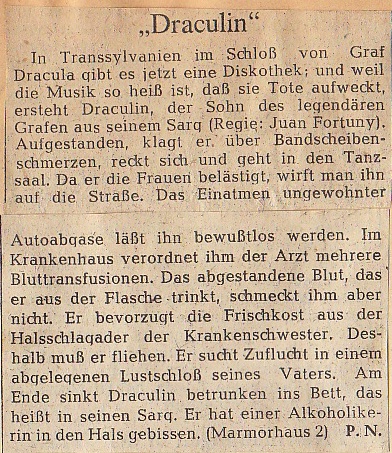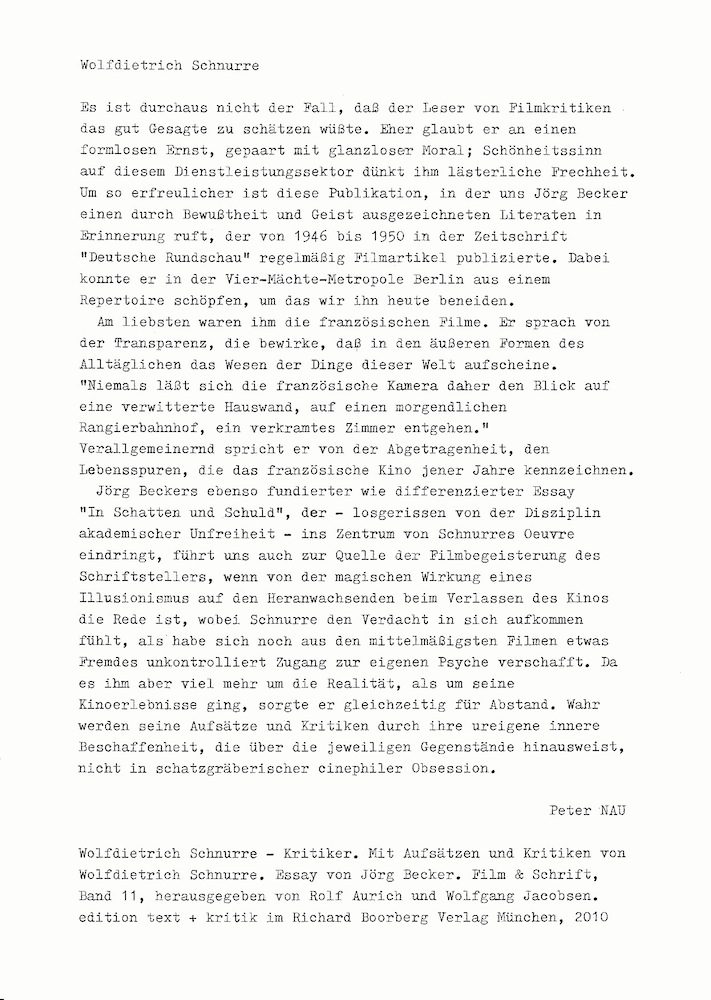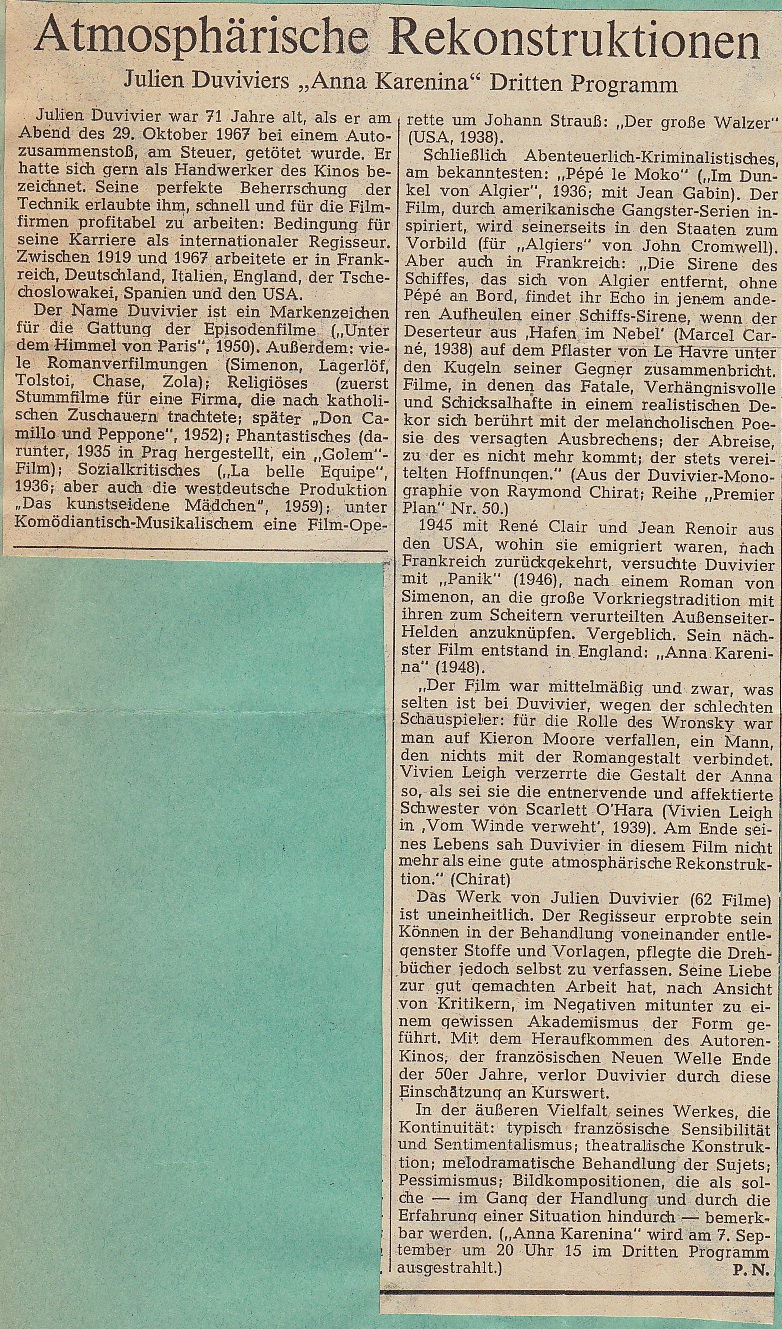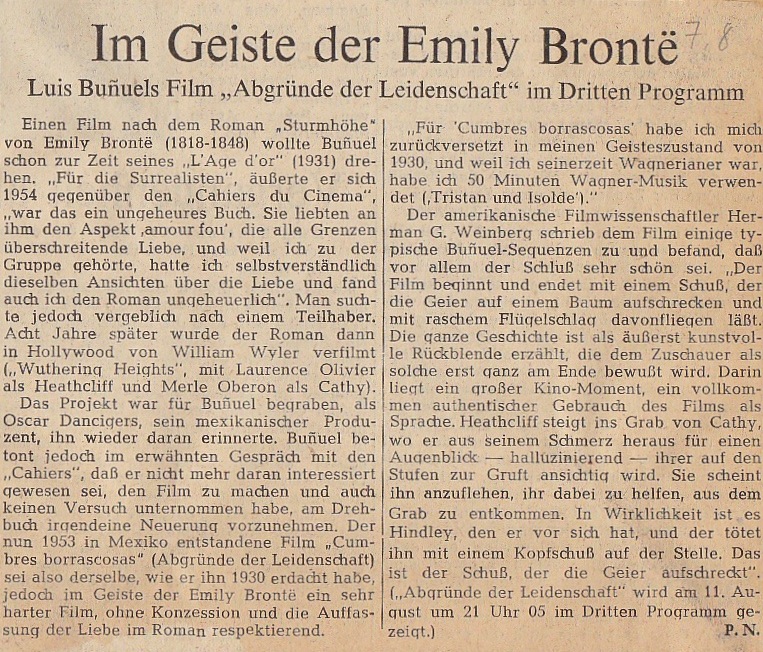September 2011
Freitag, 30.09.2011
Mittwoch, 28.09.2011
JB / Faces
Bei mubi erwähnte David Hudson neulich, James Benning habe zwischen RUHR und TWENTY CIGARETTES noch einen weiteren Film gemacht, ein „shot-for-shot remake“ von Cassavetes‘ FACES. Die Neuigkeit kam aus einem Interview am Rande des Toronto International Film Festival, das Blake Williams mit Benning geführt hat.
Klaus Volkmer hat Williams‘ Tweets, in denen er von dem Projekt berichtet und aus dem Gespräch zitiert, zusammengesetzt. Das liest sich dann so:
12. September
Ok, y’all, the revelation from my Benning interview: between RUHR
and 20 CIGS, he made a shot-for-shot remake of Cassavetes‘ FACES.
Each shot true to dialogue & length of orig., but cropped on actors‘
faces. Take a moment to process that, because I haven’t finished yet.
22. September
More of Benning on his Faces ‚reconstruction‘:
»I like it. I reconstructed the whole film using one face … well if in
the third shot people go home then there’ll be just three faces. I only
used the face close-ups, but then I extend them to the length of the
scene, so if the scene is a half hour you see – and I measured the
amount of screen time each person had, so one of those people was on
half the time of the half hour, so you see Gena Rowlands for 15 minutes
and then the other two characters, if they were evenly – they’d each get
1/4. So I remapped their faces time wise in every scene. Yeah [it’s the
same script], but it’s silent except for two places where there’s music
where there’s a night club scene. There first one has jazz music and the
other one has disco music because the first one was a jazz club and the
other one… It’s actually quite interesting; if you know the film well
you see the whole film as faces rather than dialogue. So finally the
film matches its title.«
Dank an Klaus Volkmer.
Dienstag, 27.09.2011
Über Louie
Durch den Cargotext von Daniel Eschkötter auf die erste angefixt, ist die zweite Staffel von »Louie« die Serie dieses Jahres für mich geworden. Über das, was in der »Who are you«-Episode geschieht, denke ich ständig nach. Noch nicht gelesen, weil der link gerade erst hereinkommt (via Take These Lies), habe ich dieses lange Gespräch, das Louis C.K. mit den Leuten vom A.V. Club führte. Da wird die gerade versendete Staffel Episode für Episode diskutiert. Eins (Episodes 1-3), Zwei (4-6), Drei (7-9), Vier (10-13).
Samstag, 24.09.2011
Freitag, 23.09.2011
Donnerstag, 22.09.2011
Scene Missing
Ein paar Minuten aus Morgan Fishers STANDARD GAUGE:
»In 1971 I began work as the editor of a low-budget feature that was known under a number of titles. The original title was Blood Virgin. A later title was The Second Coming. The film was finally, albeit briefly, released in 1975 under the title Messiah of Evil. Later on it was re-released, again briefly, under still another title, which I’m not certain of. Not only was I the principal editor of Messiah of Evil, but I also had a bit part as an assistant in an art gallery. I was in two scenes. This is the last frame from one of the takes of the shot in which I make my first appearance.
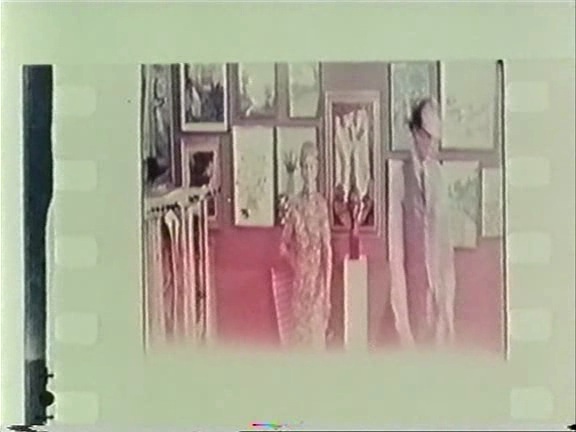
It’s blurred and over-exposed because the camera had almost stopped. The film was shot in Techniscope, an anamorphic process invented by Technicolor. In the print the image is compressed along the horizontal, and during projection a special lens spreads it back out to normal. The woman in the background is the owner of the gallery. She was supposed to be deaf, dumb, and blind. In this scene I was opposite the female lead, but because of an idiosyncrasy in her delivery it wasn’t the big moment for me that it might have been. After I gave a line, she would pause inordinately before giving hers, so it wasn’t practical to do the scene as a two-shot. Instead the director gave us each a close-up, and the pauses were eliminated in the editing. So, as I recall, I never appeared in the same shot with her.
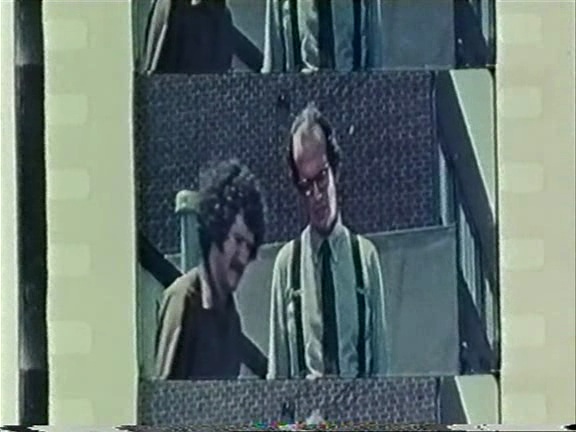
In my second scene I was supposed to be in an alley behind the gallery, where I was burning paintings by the heroine’s father in order to destroy the evidence that he had been there. This piece is just a few frames run off between takes, but it’s similar to my close-up for the scene, in which I am supposed to be gazing at the paintings as they are consumed by fire. The other person in the frame is the director. This scene turned out to be unnecessary, so it didn’t make it into the final cut.«
[Morgan Fisher: STANDARD GAUGE, USA 1984, zitiert nach Screen Writings. Scripts and Texts by Independent Filmmakers, ed. by Scott MacDonald, Berkeley: California UP 1995, S. 184-185.]
Donnerstag 22. September 2011 um 00.00 Uhr auf arte: MESSIAH OF EVIL, USA 1971, Regie: Willard Huyck; offenbar hat Morgan Fisher keinen Credit als Cutter bekommen. Wiederholung am Samstag 24. September um 02.00 Uhr. [TV-Hinweis via]
Dienstag, 20.09.2011
Ein Garibaldianer im Konvent
von Vittorio de Sica, 1942
Der Film spielt in den Jahren des „Risorgimento“ und handelt von zwei Mädchen aus verfeindeten Familien (eine nur reich, die andere von Adel), die in den Trubel der Unabhängigkeitskämpfe geraten. Die nur Reiche liebt Pflanzen und Tiere und unterhält eine Art Arche Noah auf ihrem Balkon. Ihr Vater ist ein angesehener Bürger und ab & zu sind Politiker und andere Honoratioren bei ihm zu Gast. Anläßlich eines solchen Banketts bleibt aus Versehen die Balkontür offen stehen – und die Tiere machen einen Ausflug. In turbulenten Unter- und Auf-dem-Tisch-Aufnahmen watscheln Meerschwein, Hühner, Enten und andere Wesen munter in die feine Gesellschaft, deren Damen kreischend auf Stühle hüpfen und die Herren in Panik Geschirr zerdeppern. Klingt vielleicht albern, aber es ist köstlich. Der durchaus vorhandene konservativ-politische Anlass des Banketts wird so beiläufig aufgemischt.
Später im Film (beide Mädchen besuchen eine Klosterschule) treffen in der Klosterwerkstatt noch das geliebte Meerschwein, die heimliche Voliere des Hausmeisters und das Pferd des verwundeten garibaldianischen Soldaten zusammen und erschrecken die Nonnen.
Ein herrlich unterhaltsamer Film im Ganzen, pro-dionysisch wie Renoir, mit einer tatkräftigen Caterinetta, die der lyrischen Mariella die sommersprossige Stirn bietet und für die Revolution um ihr Leben galoppiert. Nebenbei nimmt der Film die Bourgeoisie und politische Elite auf’s Korn, deren Fähnlein stets im Wind weht.
